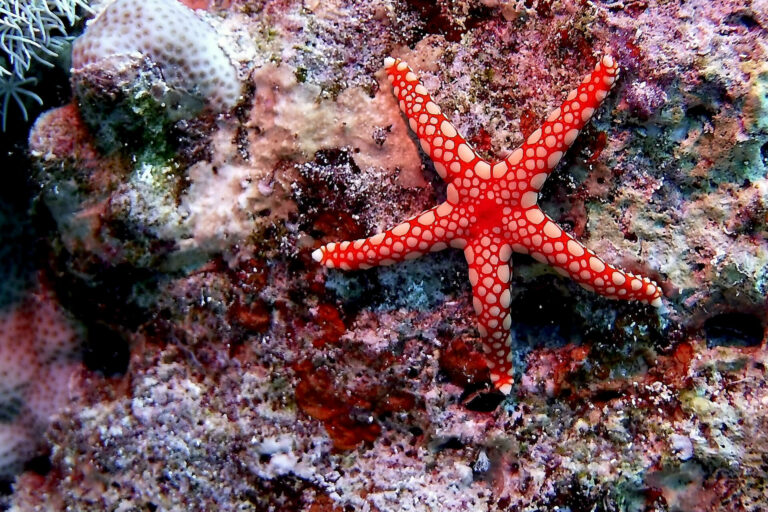HEALTH MONITORING: ECHINODERMS
STARFISH
Sigl R., Imhof H., Settles M., Laforsch C. (2013): A novel, non-invasive and in vivo approach to determine morphometric data in starfish. Journal of Experimental Marine Biology and Ecology 449: 1-9.
FULL TEXT
Abstract
Starfish (Echinodermata: Asteroidea) are present in most benthic ocean habitats and play an important ecological role as keystone species or by dominating through sheer individual numbers. In order to assess nutritional and reproductive states in ecological studies on asteroids, invasive techniques to calculate organ indices are conventionally used. We present a non-invasive method that enables imaging and morphometric measurements in starfish in vivo. We used a clinical 1.5 T magnetic resonance imaging (MRI) scanner to produce sectional images of three starfish species and employed these image stacks to generate 3D models of the pyloric ceca, gonads and the endoskeleton. In comparison to pre-clinical MRI scanners, that provide higher resolutions, clinical MRI is not limited to small objects, but allows the investigation of larger samples such as the starfish used in the present study. Volume data from MRI-based 3D reconstructions were compared to conventional invasive measurement techniques as well as high resolution MRI scans and were tested for inter-observer effects. Here we show that MRI is a suitable method for precise imaging and volumetric measurements in fixed and living marine specimens. Compared to other methods, it allows not only the production of time series data on single individuals as well as populations, but also non-destructive analyses of valuable specimens, such as museum material.
Prentice C., Gehman A. L. M., Kellogg C. T. (2023): Comparison of swab DNA extraction methods for examining sea star dermal microbiomes. Aquatic Microbial Ecology 89: 119-125.
FULL TEXT
Abstract
Marine invertebrates are surrounded by and interact with an array of microbes, yet their microbiomes remain largely unexplored. With a seemingly endless choice of nucleic acid extraction kits, there is a need to assess the compatibility across approaches to determine whether microbiome results are comparable across studies employing different extraction methods. In this study, 5 kits were compared for extracting DNA from dermal swabs from 2 sea star species: Pisaster ochraceus and Dermasterias imbricata. DNA yield varied by kit, as did the ease of PCR amplification. Using 16S rRNA amplicon sequencing, differences in microbial richness and diversity were observed between sea star species, but not among extraction kits. Relative abundances of the most abundant prokaryotic phyla were largely attributed to sea star species rather than kit: the D. imbricata microbiome was dominated by Proteobacteria, whereas P. ochraceous had more even representation of Proteobacteria, Spirochaetota and Bacteroidota. Our results suggest that, despite some differences in ease of amplification, all 5 extraction kits examined here provide comparable and suitable results for characterizing sea star dermal microbiomes.


